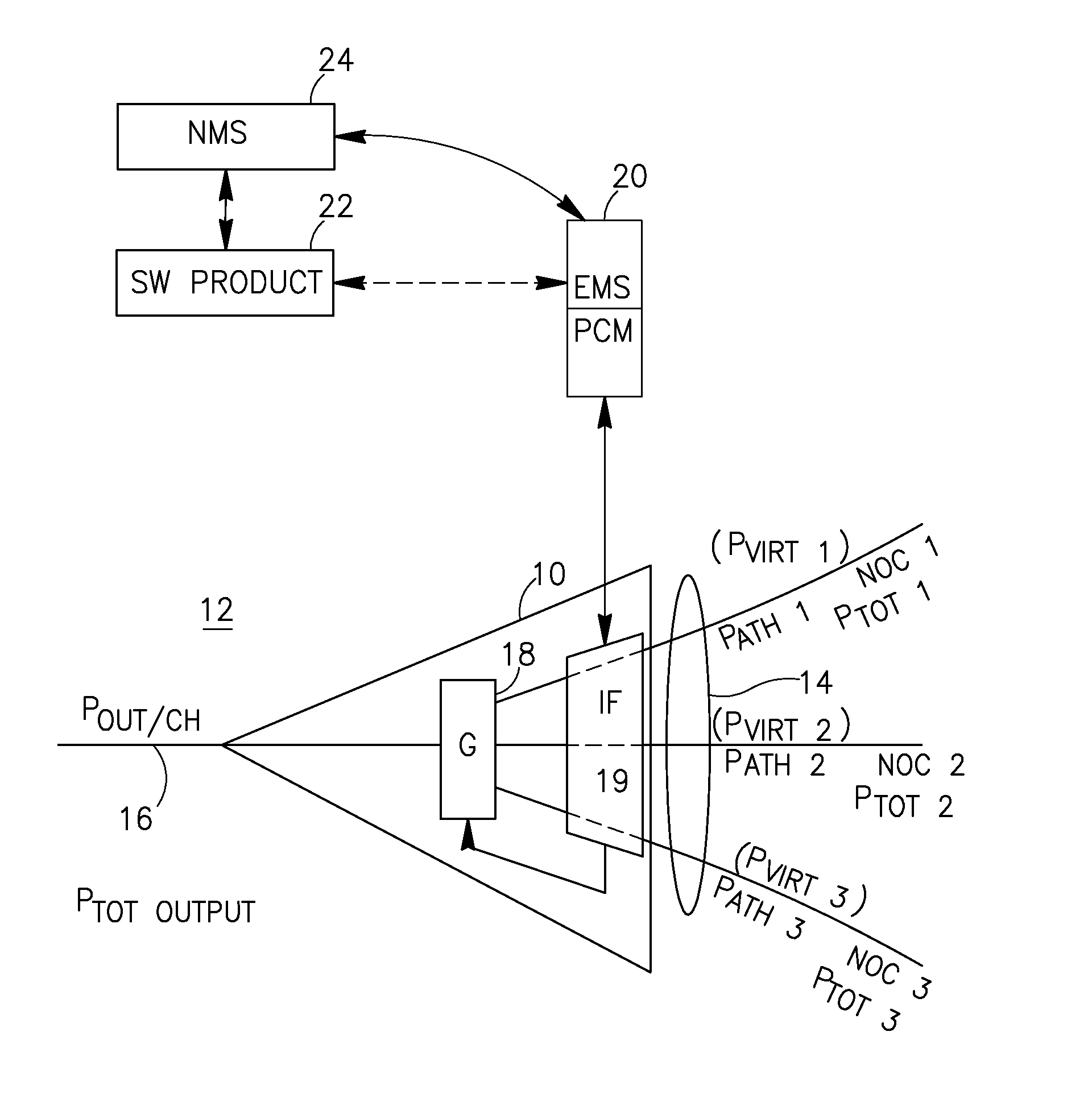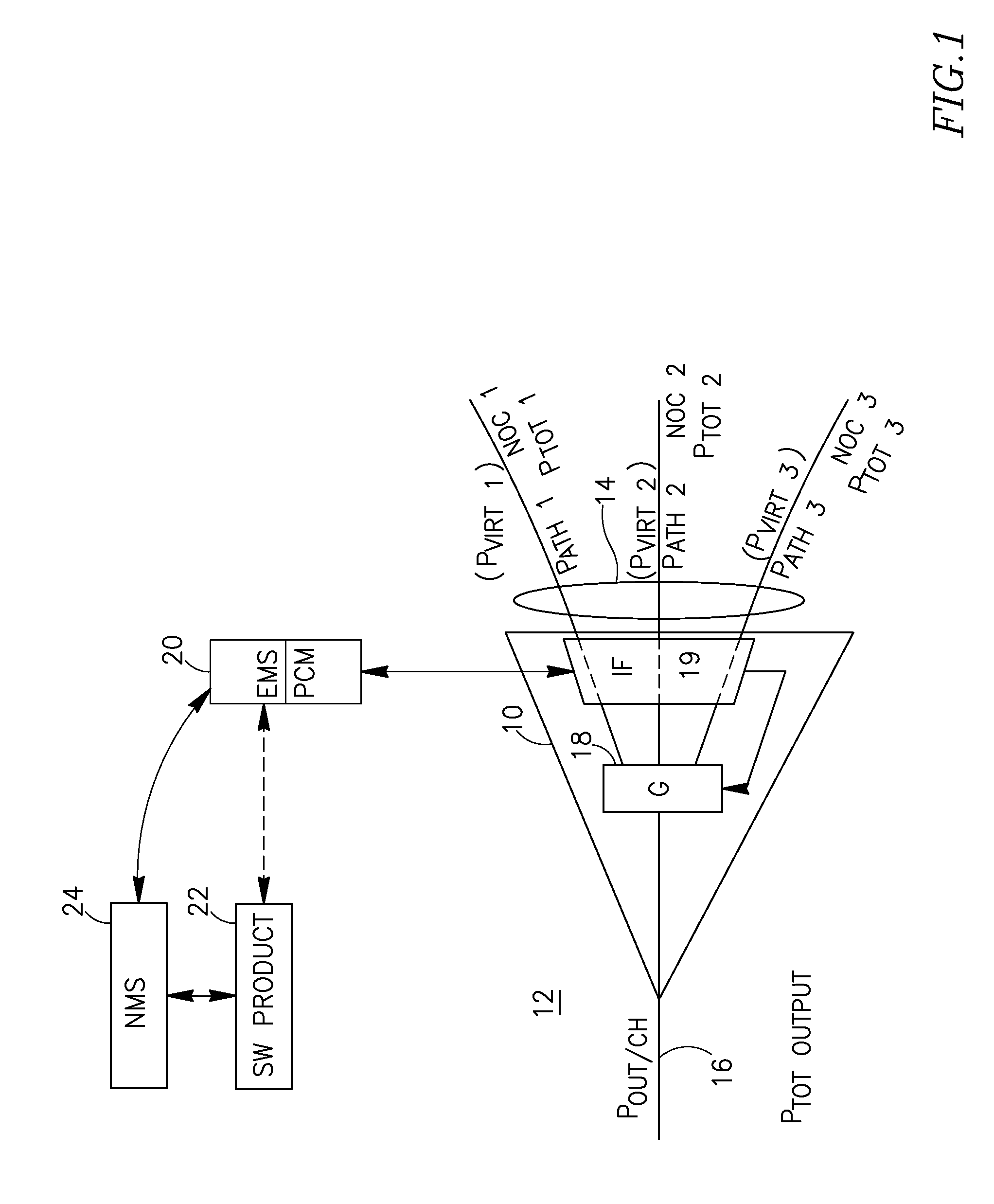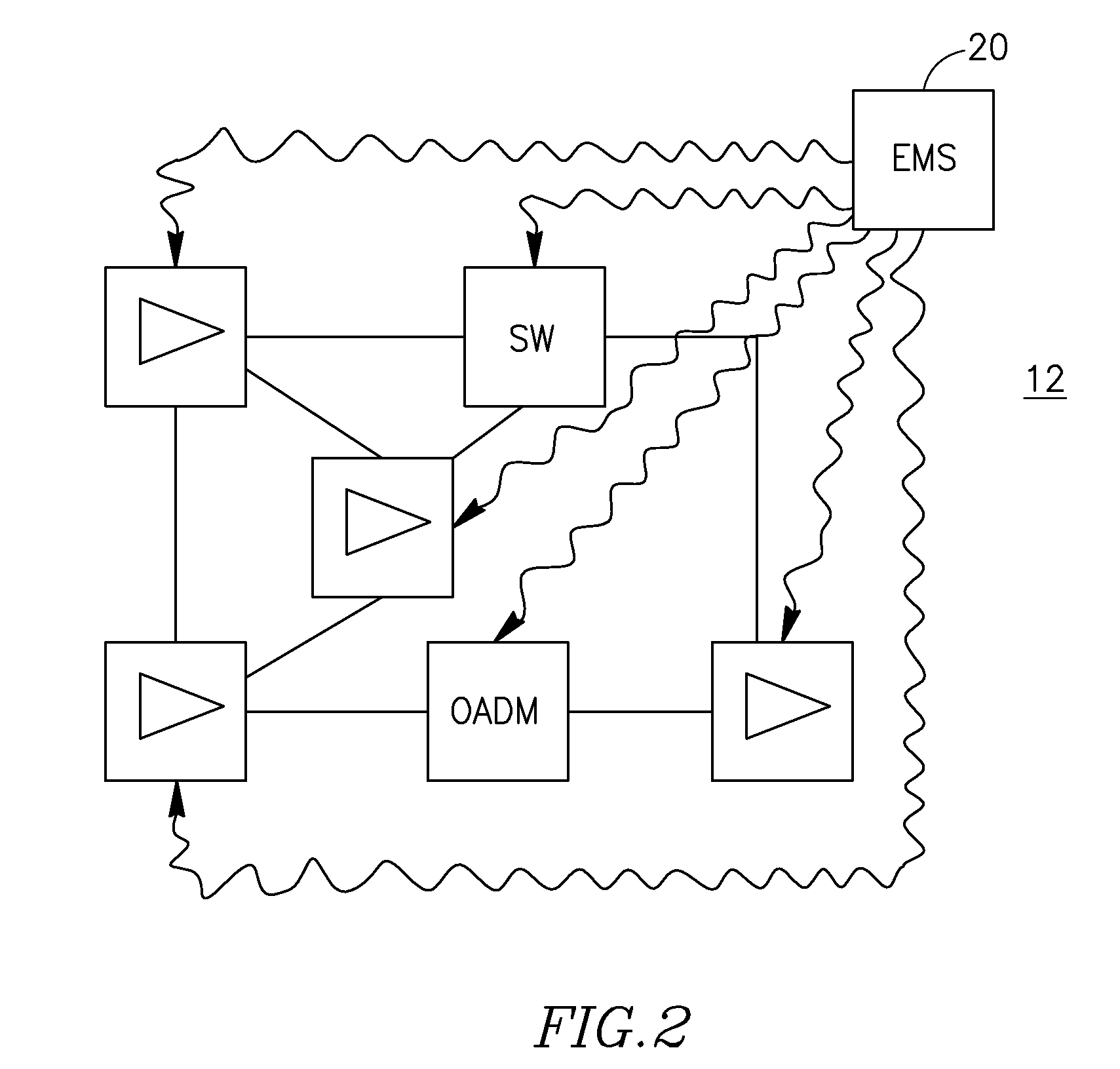Technology for simulating and/or controlling communication optical networks
a technology for optical networks and optical amplifiers, applied in multiplex communication, wavelength-division multiplex systems, transmission monitoring, etc., can solve the problems of most problematic network nodes, oadms and switches, and without knowing the channel allocation of handled, so as to achieve effective designing and/or simulation and/or control
- Summary
- Abstract
- Description
- Claims
- Application Information
AI Technical Summary
Benefits of technology
Problems solved by technology
Method used
Image
Examples
Embodiment Construction
[0057]FIG. 1 shows an optical amplifier 10 being a node in an optical mesh network 12. Actually, instead of the amplifier there may be another network element (OADM, switch) controlled by EMS 20 to perform power control. The amplifier 10 is connected to an input optical fiber schematically shown as 14, and to an output optical fiber schematically shown as 16. The amplifier's gain is schematically shown as a box G marked 18. Let a network designer has information that the amplifier 10 is expected to receive maximum three communication paths (Path 1, Path 2 and Path 3), and these paths will probably have the following capacity: they will comprise no more than the number of optical channels NOC1, NOC2, NOC3, respectively. Let, in the ideal case, the amplifier 10 should amplify any of the received optical channels so as to provide a desired total output power Pout total. It is selected in advance, and is usually the maximal possible value as understood to those skilled in the art.
[0058]...
PUM
 Login to View More
Login to View More Abstract
Description
Claims
Application Information
 Login to View More
Login to View More - R&D
- Intellectual Property
- Life Sciences
- Materials
- Tech Scout
- Unparalleled Data Quality
- Higher Quality Content
- 60% Fewer Hallucinations
Browse by: Latest US Patents, China's latest patents, Technical Efficacy Thesaurus, Application Domain, Technology Topic, Popular Technical Reports.
© 2025 PatSnap. All rights reserved.Legal|Privacy policy|Modern Slavery Act Transparency Statement|Sitemap|About US| Contact US: help@patsnap.com



